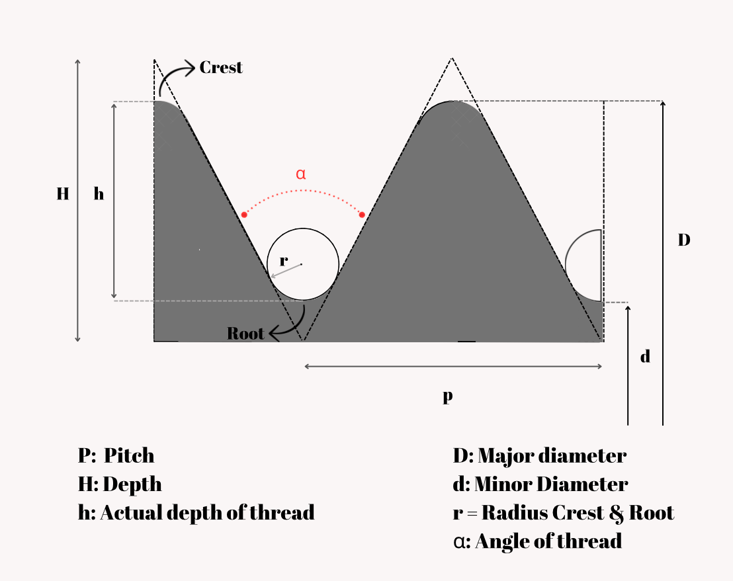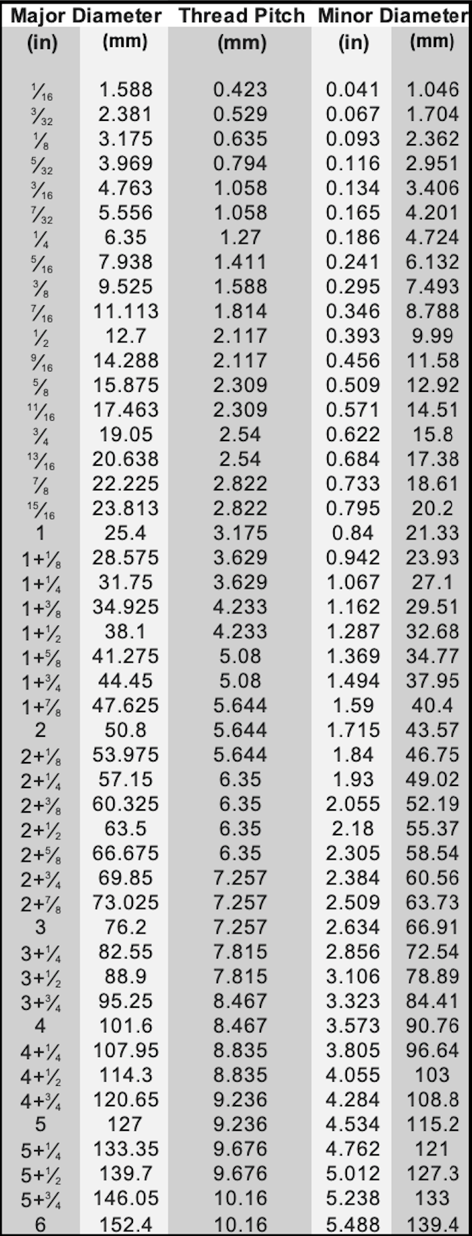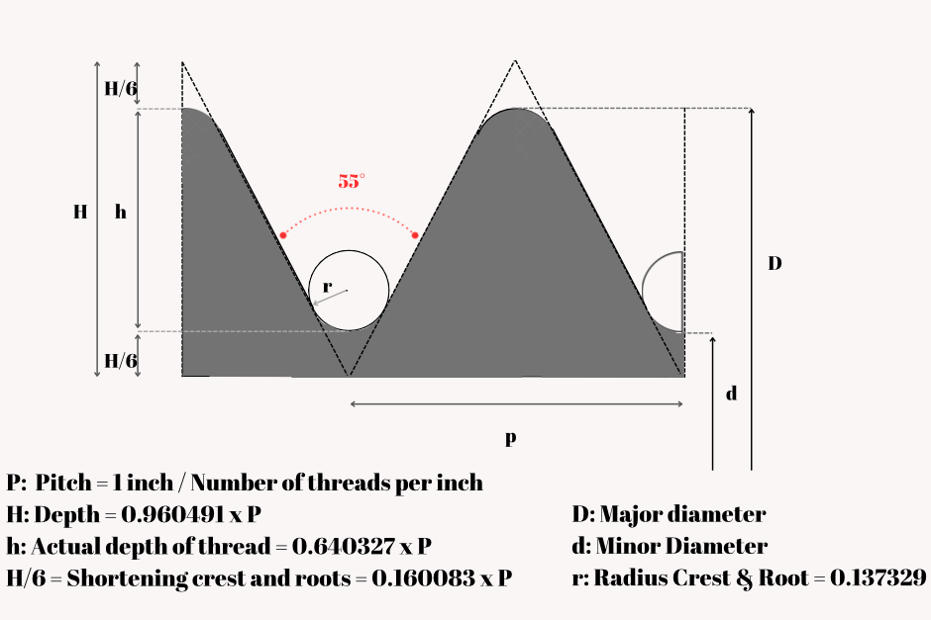BSW / British Standard Whitworth
British factories in the 19th century had to design their own fasteners to produce mechanical parts. Because there were no standardized screw threads, numerous problems were caused back then. For instance, it was not possible to order a component from Factory A which could be screwed with Factory B’s bolts and nuts, as they were not compatible with each other. Someone had to solve this problem, but who would it be?
An English engineer, Sir Joseph Whitworth, invented the British Standard Whitworth (BSW) system.
To standardize a thread form, special variables of threads, changing their characteristics, must be known. Take a look at the picture below to see the thread anatomy.


Threads are structures with peaks and valleys, called crests and roots. The tips of crests and roots are rounded rather than being perfectly sharp. These rounded edges help reduce stress concentrations, making threads more durable and resistant to damage. The letter “D” stands for major diameter, which is the length from the center of the bolt to the crest. And “d” is for minor diameter, the length from the center to the root. The depth (H), actual depth (h), and radius of crest & root (r) are functions depending on the pitch (P) length in BSW. The thread angle (α) is always 55 degrees, unlike the Metric system, where it is 60 degrees.
Now we know these special lengths of threads, defining their characteristics. That was the priority of Sir Joseph Whitworth, making them standardized so people could check thread types from charts or tables.


To give an example, a bolt with a major diameter of ¼ inch has a thread pitch of 1,27 mm (P = 1.27 mm). Then, its depth (H), actual depth (h), and radius of crest & root are as follows:
H = 0.960491 x (1.27 mm) = 1.219824 mm
h = 0.640327 x (1.27 mm) = 0.813215 mm
r = 0.137329 x (1.27 mm) = 0.174409 mm
This innovative approach increased the efficiency of production and allowed factories to work together. They were able to trade mechanical components with each other. In addition, it led to the foundation for future standardization, such as the Metric system. Today, even though the BSW system has been largely replaced by Metric, it remains a crucial part of engineering history that demonstrates the significance of standardized measurements in manufacturing processes.
Eren Erden
Thread Anatomy


Thread Anatomy of Whitworth
Whitworth Thread Sizes
Get in Touch
02erenerden@gmail.com
